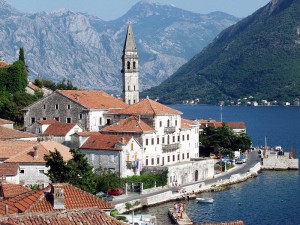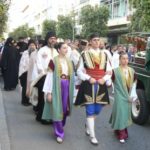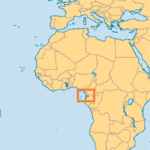From the Ottoman Empire to Modern Gay Rights
Montenegro is a small Adriatic country has been shaped by a variety of cultural influences throughout history. Eastern Orthodox, Slavonic, Central European, Islamic, and seafaring Adriatic cultures (such as the Republic of Venice) have been the most important in recent centuries.
Montenegro saw its independence from the Ottoman Empire in 1878 and from 1918 it was a part of the larger Yugoslavia until that confederation broke up in 1992. From then until 2006 Montenegro and Serbia were the only remnants of Yugoslavia. Finally, in a referendum held in May 2006, Montenegro declared independence from Serbia and became an independent country in June of that year.
Montenegro decriminalized homosexuality in 1977. Male and female same-sex sexual activity are both legal but same-sex couples are not eligible for the same legal rights as straight married couples. The age of consent is 14 for both gay and non-gay sexual behavior. Homosexuals are not banned from military service. Curiously, water polo (a homo-sensual sport) is often considered the national sport.
On 27 July 2010, the Montenegrin Parliament passed a non-discrimination law that included sexual orientation and gender identity. This law is one of the requirements for European Union membership. Nevertheless, gays and lesbians experience discrimination and harassment in the general society if they bring notice to themselves. The gay scene is small and anti-gay opinions are deeply entrenched in the culture.
Following two attacks directed at gay people in the capital city Podgorica, just days before the Pride events, the organizers of Montenegro’s first Gay Pride parade announced on 17 May 2011 the event was cancelled. “Gay Life in Montenegro” is struggling to make its calm voice heard amid loud opposition shouting. (en.wikipedia.org/wiki/Montenegro).
Below are two stories about LGBT Montenegro, the first written by Nela Lazarevic from the ERSTE Foundation, the second from Kathy Jones of AFP.
Compiled by Richard Ammon
GlobalGayz.com
March 2012
(1)
Montenegro’s Gay Community Stays Hidden to Survive
The following story was written by Nela Lazarevic as part of the Balkan Fellowship for Journalistic Excellence, an initiative of the Robert Bosch Stiftung and ERSTE Foundation, in cooperation with the Balkan Investigative Reporting Network, BIRN. It describes the difficult circumstances under which LGBT citizens live and hide.
http://www.balkantravellers.com/en/read/article/1604
Spring 2010
Text and photographs by Nela Lazarevic
The invisibility of homosexuals and lesbians in public and social spheres is further slowing efforts to overcome homophobia in this conservative society. Mirko and Nenad would like to forget the night when the Podgorica police caught them being intimate in a park and decided to teach them a lesson by beating them up and leaving them in the dark with no clothes. Naked, they returned home discretely and tried to conceal all traces of this ‘disgrace.’ “These guys felt there was no climate of tolerance in Montenegro, so any attempt to process this case would have done them more harm than good,” remarks Aleksandar Sasa-Zekovic, a human rights researcher and a member of the Council for Civil Control of Police.
One of the few people who knew about this case, Zekovic received confirmation of the men’s story from police sources. “I had everything I needed to take this case to court except what mattered most, the consent of one of the victims,” he adds. Fear of exposure terrified them. Four years on, none of the police officers involved have been held accountable and the public never found out what happened to the two men, whose real names had to be concealed.
Data gives a false picture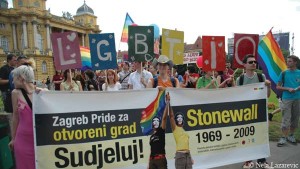
The small number of registered incidents of homophobia in Montenegro should not be interpreted as a sign of tolerance. Even if they report attacks, victims of homophobic violence tend to avoid any mention of sexual orientation. Consequently, statistical data does not reflect the actual level of homophobia in the country.
25-year-old Ivan (not his real name), a student from Podgorica, had his cheekbone broken a couple of years ago while protecting his boyfriend from an attacker. While beating him, his assailant yelled: “Bloody queer, we’ll kill all of you!” The eardrum of Ivan’s partner was punctured. They both ended up in an emergency ward, while their assailant escaped. A police inspector questioned them in hospital. “We only told him part of the story and never mentioned the true cause of the incident,” Ivan recalls. “We told him a guy tried to snatch our umbrella in the rain and attacked us when we resisted.” This remains the official version. “At home, I said my cheek-bone was broken in a club in a fight that I did not start, but had just happened to be there,” he adds.
Ancient taboo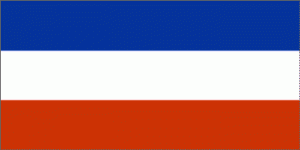
The patriarchal culture of this small country, with a population of only 626,000, has shaped a mentality that makes it difficult for alternative sexual orientations to be accepted. Although Montenegro was one of the first former Yugoslav republics to decriminalize homosexuality, doing so in 1977, most citizens still view homosexuality as a disorder. “Montenegro is well known for its traditional, patriarchal and tribal attitudes that determine people’s positions on numerous social issues and phenomena,” Srdjan Vukadinovic, a sociology professor from the Montenegrin Social Research Center, explains. “That is why societal change is taking place much more slowly than in neighboring countries.”
There is little to indicate that a change in people’s attitudes toward sexual varieties is imminent. Social and political leaders mostly keep quiet on the subject of sexual orientation or express negative views, while the media rarely cover themes related to the gay and lesbian community, which has no leaders to articulate their demands in public.
Tool for blackmail
Because people’s alternative sexual orientations remain closely-guarded secrets, homosexuality is often used for blackmail. “When you have a traditional mentality like that in Montenegro, being targeted as a homosexual is the least desirable thing,” Zekovic says.
It can be easier to harm someone’s reputation in Montenegro by saying they are gay than by saying they are corrupt or have broken the law, he adds. Zekovic accuses Montenegro’s political elite of routinely using allegations of homosexuality as tools to discredit rivals and opponents. Individuals outside of politics often do the same. Victims from all sectors of society usually omit any public mention of the homophobic aspect of threats they receive, in order to protect their privacy in an intolerant environment.
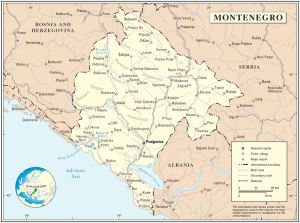
In August this year, ‘D.M.’ from Podgorica extorted 100 euros from a gay man in exchange for keeping silent about his sexuality. But when he demanded another 30 euros, the victim reported the case and ‘D.M.’ was indicted for blackmail. It was not known whether the victim claimed discrimination based on sexual orientation, however. If not, another crime involving homophobia will have passed unrecorded.
The Slovenian experience
On the surface, members of the gay community appear better off in the former Yugoslav republic of Slovenia. A Lesbian, Gay, Bisexual and Transgender LGBT movement has been active there for 25 years and the community enjoys the protection of anti-discriminatory legislation. Same-sex couples can register as civil partners.
Yet the culture of concealment is still strong, and research suggests that up to 92 per cent of Slovenes who have experienced homophobic violence, have never reported it. Jasna Magic, of the Povej Naprej project, which monitors homophobic violence, says internalised homophobia explains why most of Slovenia’s gay community fail to report attacks. Like their counterparts in Montenegro, they tend to play down or even deny the crimes committed against them. “Internalised homophobia means that deep inside ourselves we believe something is wrong with us,” Magic says. “That is why we find justification for hate crimes.”
Keep safe, stay invisible
“Invisibility becomes the key survival strategy for LGBT persons in hostile environments,” Morten Kjaerum, director of the European Union Agency for Fundamental Rights, FRA, states in a study published in April 2009.
If an “invisibility strategy” remains widespread even in tolerant EU countries, as the FRA study claims, it is no surprise that it is more pronounced in the Balkans. Montenegro’s homosexuals and bisexuals try to pass unnoticed and only organize meetings in strict privacy. Acquaintances are made online or through existing networks of LGBT friends.
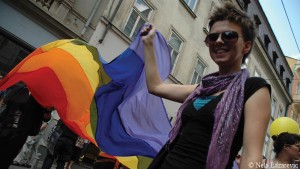
There is no official estimate of the number of LGBT persons in Montenegro, but if, as the global LGBT community unofficially estimates, between 5 and 10 per cent of any population is either bisexual or gay, then the likely number in Montenegro reaches tens of thousands.
Gay parties in Montenegro are usually organized in the apartments of older, well-off gay men. Only selected friends are invited. “If you went to a party like this in the West, you could take along anyone who was fun, but in Podgorica you are expected to bring a gay man looking for a boyfriend,” complains 28-year-old Marko from Podgorica.
A superficial form of socializing takes place in cruising areas, usually parks. Gay men meet there, usually at night, and become intimate often without introducing themselves. The LGBT community is divided on this. Conservative gays disapprove, but others, like Marko, say this aspect of the gay scene is similar to those in Amsterdam or Barcelona; it’s not a safe or polite way to make contact but it does serve a sexual need as well as letting otherwise isolated individuals know they are not alone.
Cruising areas may be one of many available options in more tolerant countries but in Montenegro it is one of the few options available for people to meet without attracting unwanted attention.
Mixed nudist beaches provide another place where gays can express their sexuality, and are popular in summer. Marko says that heterosexuals who go to nudist beaches “tend to be more open-minded and less likely to be scandalized by the sight of two persons of the same sex being intimate” than mainstream Montenegrins, which is why such locations are favored.
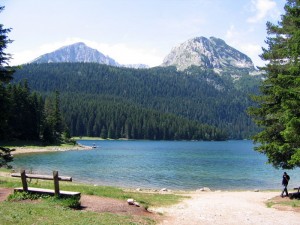 Apart from parks and beaches, members of Montenegro’s LGBT community avoid congregating in public. Some say they do not feel the need to express their sexual orientation outdoors. Slovenian professor of Gay and Lesbian Studies, Roman Kuhar, says this may reflect internalized homophobia. Heterosexuals feel no such need for privacy, he notes. “Every time you see a heterosexual couple holding hands, they are signalling their sexual orientation,” Kuhar says.
Apart from parks and beaches, members of Montenegro’s LGBT community avoid congregating in public. Some say they do not feel the need to express their sexual orientation outdoors. Slovenian professor of Gay and Lesbian Studies, Roman Kuhar, says this may reflect internalized homophobia. Heterosexuals feel no such need for privacy, he notes. “Every time you see a heterosexual couple holding hands, they are signalling their sexual orientation,” Kuhar says.
Foreign virus
The absence of LGBT persons from public life allows traditionalists to claim that homosexuality barely exists in Montenegro or is a deviancy “imported” from the West, views supported by church leaders. They believe homosexuality is a “psychological and emotional disorder,” said Gojko Perovic, chancellor of the Faculty of Theology in the city of Cetinje.
Similarly conservative views come from the world of psychiatry. On January 11, 2007, the daily newspaper Pobjeda quoted psychiatrist Borislav Mitric describing homosexuality “as a basic drives disorder”. Zekovic says it was a disgrace that this drew no reaction from Mitric’s colleagues, who should have pointed out, for example, that the World Health Organization removed homosexuality from the list of mental disorders decades ago in 1990.
Behind Kosovo and Macedonia
The determination of people of alternative sexual orientation in Montenegro to keep a low profile could explain the failure of the few attempts made at organized action. Last July, users of the online Montenegro-Gay Forum tried to organize an unofficial meeting at the Greenwich cafe in Podgorica. Although the event was billed as the first gay night-time event in Montenegro, only a dozen people showed up.
“At least 20 other gay guys were sitting in the cafe’s garden, although we had an agreement to go inside,” one member who attended the event commented later on the group website. “They lacked the guts to come in and be recognized.”
The only action against homophobia in Montenegro this year was the distribution of flyers in Podgorica by Juventas, a youth organization, on May 17, the International Day Against Homophobia. Although the event took place on a quiet Sunday morning, it still met with homophobic opposition. One teenage girl tore Juventas’ posters off a nearby wall, while a group of boys refused to take flyers and yelled abuse from a distance. After a group of football fans known as the ‘Varvari’ (barbarians) threatened to attack the students, the scheduled afternoon session was called off.
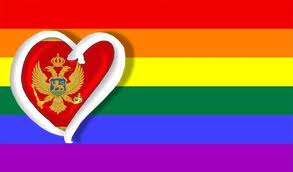
Milos, a student from Podgorica, thinks LGBT activism in Montenegro is non-existent because of a lack of motivation. As a result, Montenegro has only one LGBT organization called Progress. Even such small, traditionalist states as Albania, Bosnia, Kosovo and Macedonia have more than one LGBT organization.
Bjorn van Roozendaal, from Dutch LGBT organisation COC, which financed a previous LGBT organization, Slobodna Duga (Free Rainbow), reported that the coordinator of this group “disappeared in 2006 together with the money allocated for LGBT projects”. Such dishonesty and mistrust has caused hesitation in foreign LGBT organizations to fund other such groups in Montenegro. Nevertheless, another LGBT organization was started in 2011 called LGBT Forum Progres.
Like Croatia 15 years ago
Marko Jurcic, from the organising committee of the Zagreb Pride March, says the situation in Montenegro reminds him of Croatia in the nineties. But fear of homophobic attacks does not justify the current lack of initiative, he adds. He recalls the guerrilla-style actions carried out in post-war Croatia, when gay activists put up anti-homophobic posters at night.
Croatia’s example suggests that overcoming homophobia is time-consuming and strenuous. Increased visibility by homosexuals can initially trigger even stronger negative public reactions. In Croatia, whose LGBT movement is 15 years old, homophobic attacks still occur, with around 40 registered in Zagreb since 2002. In 2009, three men attacked a 27-year-old man who was returning from the June 13 Pride march, breaking his nose. The victim reported the case and the police have urged witnesses to aid the investigation.
A recent 2012 survey conducted by the Center for Civic Education (CGO) and the gay movement Progres in collaboration with the Canadian embassy conducted a study of homophobia in Montenegro. It found that sixty percent of Montenegrins consider homosexuality an illness. 52% say they support the right of homosexuals to publicly declare their sexual orientation, compared with 45% who are against it. Another 25% say they believe that homosexuals are a group of people at risk and who should be helped to achieve their rights, a statement rejected by 40% of the respondents.
Gay people as ‘terrorists’
Another Balkan related development in Croatia this year was the decision of the far-right Party of Pure Rights to stage an official Anti-Pride parade coinciding with Zagreb Pride. “They yelled and spat at us,” recalls Mica Tomic, an Orthodox cleric who grew up in the US and attended the march.
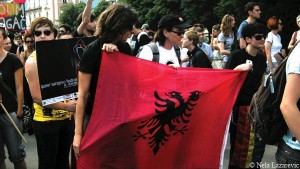 The president of the Party of Pure Rights, Josip Miljak, was unapologetic. Homosexuals “terrorise others and force their lifestyle upon the rest of Croatia,” he said.
The president of the Party of Pure Rights, Josip Miljak, was unapologetic. Homosexuals “terrorise others and force their lifestyle upon the rest of Croatia,” he said.
But compared to Montenegro, the Croatian media demonstrated far greater sensibility towards LGBT rights in their reportage of the attacks. Another difference is that some Croatian politicians send supportive letters to Zagreb Pride. “That is nice, although we won’t be satisfied until we see them marching with us,” Franko Dota, one of the organizers of Zagreb Pride, said.
The only person who has dared to call for a Pride Parade in Montenegro was a Serbian activist, Atila Kovacs. When he made this suggestion on Montenegrin television in 2005, football fans gathered in front of the building to throw stones at him. Police arrested three people, but nobody was charged.
Legal Status
Sexual orientation is not explicitly mentioned in Montenegrin law, although in theory all minority rights are protected by the constitution. An anti-discrimination law specifically dealing with sexual minorities was adopted in 2010 as a prerequisite for the abolition of visa requirements for travel to European Union states.
However, the passage of a similar anti-discrimination law in Serbia sparked public hostility and, at one point, the bill was withdrawn at the request of religious leaders but later tabled and approved. In Montenegro the law has not diminished the number of homophobic attacks. On the contrary, similar to the Serbian situation, they actually increased, especially in the run-up to an announced Pride Parade.
Numerous attacks on Serbian gay clubs and individuals were registered, and Belgrade was covered with homophobic graffiti. In the end, the parade was cancelled after police said they could not guarantee the safety of the marchers. However, despite violent opposition Gay Pride was held in 2010 with the help of thousands of police.
Last year’s ‘Queer Festival’ in neighboring Sarajevo, Bosnia also triggered violent attacks, mostly from Islamic extremists. In 2011 Montenegro canceled Gay Pride before it became a target for right-wing extremists and violent gay bashers. Rather than canceling 2012 events entirely, the organizers in Montenegro decided to abandon public gatherings and workshops, and promote their message of tolerance through billboards and TV and newspaper adverts.
Visibility is the key to change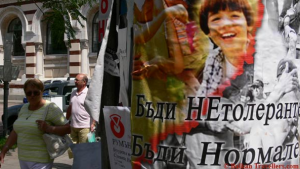
Although local research suggests that only eight per cent of victims of homophobic violence in the neighboring Balkan country of Slovenia reported incidents, but even the small number of cases has attracted attention and helped to gradually begin the slow change in society’s views on sexuality there.
However, danger still lurks. While attending a literary event that was part of Slovenia’s Ljubljana Pride Week, journalist and LGBT activist Mitja Blazic stepped outside a gay-friendly bar in Ljubljana to smoke when he was attacked by eight masked men. He needed three stitches in his head and he has not regained full function in the fourth finger on his right hand. The difference between Mitja and the two Montenegrin men at the beginning of this report, however, is that the Slovenian journalist immediately reported the hate crime, and the case is being processed.
Back in 2006, Mitja and his partner brought a court case asserting that Slovenian law on same-sex partnerships was discriminatory when compared to marriage. On July 2 this year, Slovenia’s Constitutional Court gave parliament six months to make same-sex civil partnerships more equal to marriage. “Discrimination against sexual minorities gets much more media attention in Slovenia than in Montenegro, but this is a result of 25 years of struggle,” Jasna Magic from LGBT NGO, Legebitra, says.
She insists that visibility is the catalyst of change: a community will only start to accept a phenomenon if they can see it. Slovenian sociologist Roman Kuhar agrees. Were LGBT movements more active in Montenegro, it could achieve the same results as those seen in Slovenia, and in less time because “the path has been trodden by others.” It remains to be seen whether Montenegro’s LGBT community will take this advice and whether the Montenegrin public will agree to free and open dialogue about issues of sexual orientation.
(2)
New Gay Rights NGO in Montenegro: LGBT Forum Progress
by Kathy Jones
February 20, 2011
http://www.medindia.net/news/First-Gay-Rights-NGO-in-Montenegro-81156-1.htm
Source: AFP
Activists confirmed that Montenegro, known as one of the most patriarchal societies in the region, got a new non-governmental organization dealing with gay rights.
“The gay population in Montenegro is marginalized and stigmatized,” Zdravko Cimbaljevic, director of the new LGBT Forum Progres, told AFP. “Members of this sexual minority live isolated and in fear,” Cimbaljevic said, explaining the motives for establishing the NGO.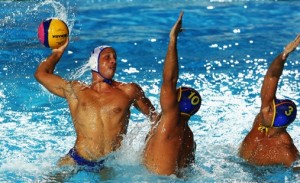
The goal of the NGO is to protect and fight for equal rights for the LGBT (lesbian, gay, bisexual and transgender) population, he said, adding that so far there were only a dozen members, a mix of gays and straight people.
[Photo right: water polo is the national sport in Serbia; it seems ironic that this homoerotic sport should be so popular in this homophobic country.]
Montenegrin society is highly patriarchal and homophobic. The latest surveys show that 70 percent of Montenegrins still consider homosexuality an illness. Montenegro’s own Minister for Minority Rights Ferhat Dinosa has said in the past that he would be “unhappy if there is a single gay person” in the country. He also insisted that “equaling national and sexual minorities is an insult for national minorities”.
Dinosa, who has kept the post in several cabinets of veteran former prime minister Milo Djukanovic, was recently re-appointed in the new government of Prime Minister Igor Luksic.
Although Montenegro has a law against discrimination it has not been implemented in practice when related to gay rights, according to local human right activists.
Read more:
–Serbian Gay Rights on Facebook
–First Gay Rights NGO in Montenegro
–About Montenegro: BalkanTravellers.com
–Relentless Homophobia Rages in the Balkans
–Conference: “Justice in the Balkans: Equality for sexual minorities” held in Montenegro” 28/10/09

